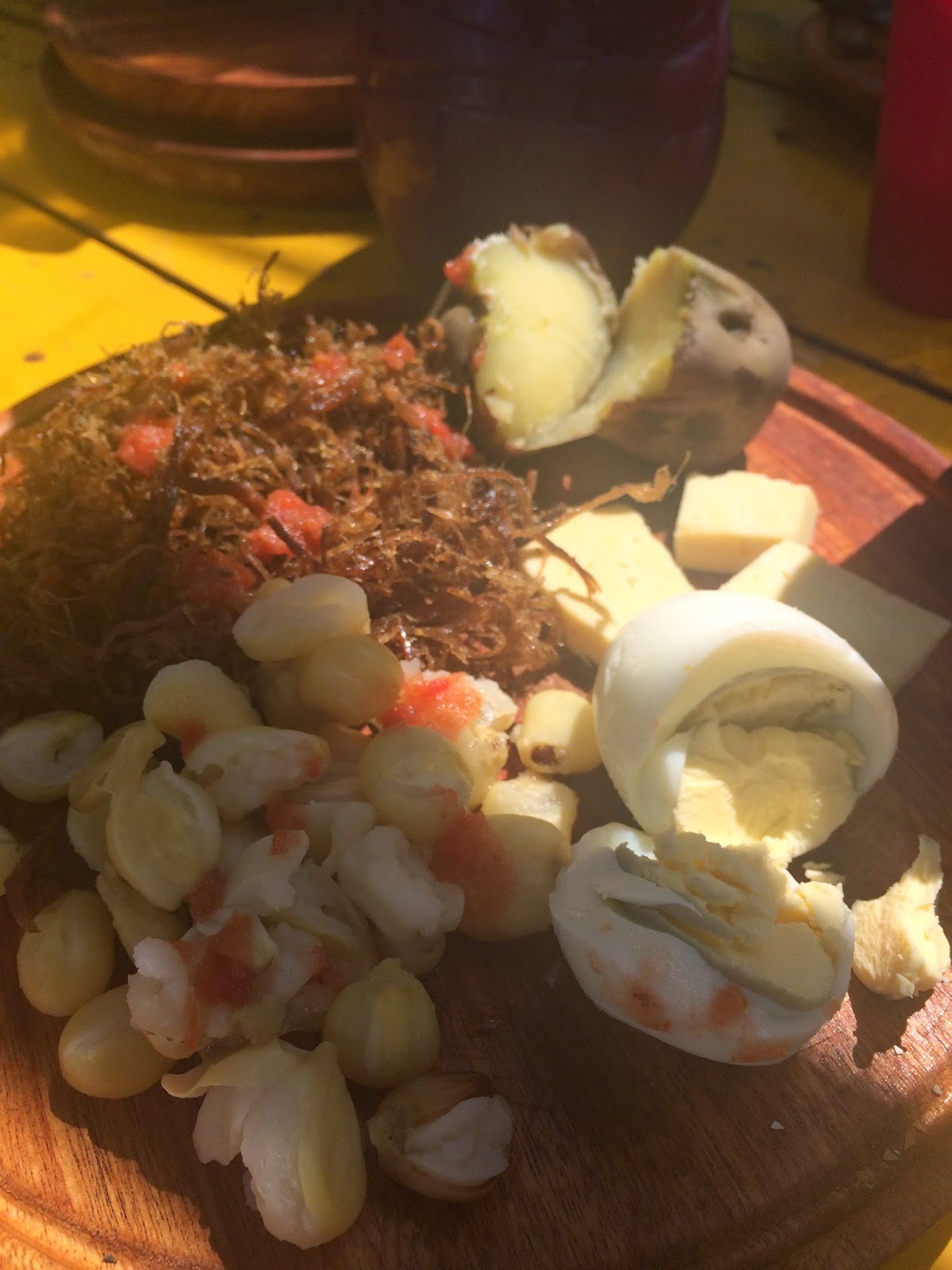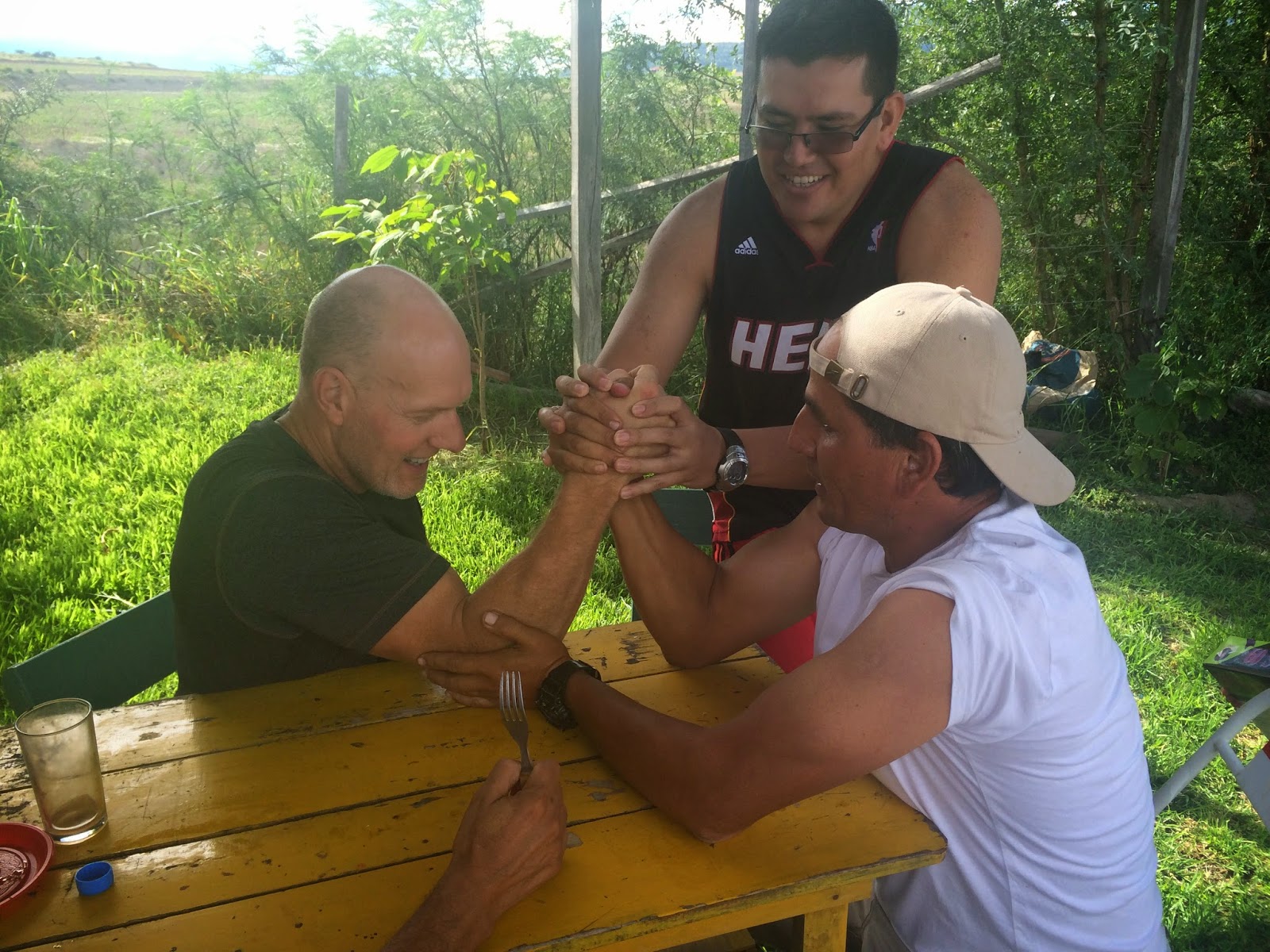 |
| From Salar de Uyuni, our route took us to North to Sucré, visits to CrossFitters in Santa Cruz, long drives to La Paz and our final days in Bolivia were spent at Lake Titicaca in Copacabana. |
Potosí - one of the highest cities in the world by elevation at 4,090m (13,400 ft.), long history of silver mining, and narrow streets with lots of cars going in every direction! The van barely fit down a couple of these crazy alley-streets!

Sucré - a very pretty city comprised of whitewashed buildings and red roofs. It was the city where Bolivia's independence was proclaimed. We enjoyed the open markets and mix of modern and old traditional styles and dress. It is easy to see why many who visit end up staying for far longer than expected. We had the pleasure of chatting extensively with the Australian owner of Condor Cafe and Trekkers, who had this happen to him 7 years ago....and he is still there.
The region is more lush, reaching up into the mountains, with great treks and views of the high farmlands, ancient Inca trails and petroglyphs, and back roads deep into canyons and craters.
The region is more lush, reaching up into the mountains, with great treks and views of the high farmlands, ancient Inca trails and petroglyphs, and back roads deep into canyons and craters.



Maragua and the Inca Trail and Inca rock paintings
- We tried to drive to the Maragua crater and had a true adventure of driving some narrow dirt roads turned to mud in the pouring rain. The inclement weather caused us to pause and reconsider, as that sticky mud filled in the tread of our tires and we found ourselves sliding backwards toward the steep dropoffs at the side of the road. We stopped and waited out the rain and thankfully Mr. Sun came out and dried the clay a bit. Enough for us to scrape it off the tires and find a bit of purchase to climb our way out of there. Maragua crater, you will be had another day...
 |
| The wet and winding road that was our demise... |



- We hiked a portion of the pre-Hispanic trail that runs from Chataquila to Chaunaca, a segment of road that formed part of a huge network of trails which extended throughout Bolivia and southern Peru during the Incan empire.


- Another trek took us to the mysterious rock paintings of Puma Mach'ay and Inka Mach'ay.


North on the road to Santa Cruz, we have been left with permanent brain damage, due to insanely rough roads! Indescribable and the worst roads we have encountered yet! 12 hours of being jarred to the bone was .... exquisite.


Santa Cruz and our CrossFit friends!
To be able to cross into Bolivia, we had to have a visa. This was a challenge to get and the thing that made it easier was letters from people we had never met, but we knew would be of gracious service to us. If it weren't for the ever welcoming CrossFit community, friends we have yet to meet in many places across the world, we might not have had some of the opportunities we have. Big thanks to Marcelo at CrossFit Redención and María Jesús at CrossFit Muf!
Santa Cruz, the largest city in Bolivia, is very tropical and internationally diverse. We enjoyed all the tropical plants, multitudes of butterflies and birds, great food, and some great workouts in and out of the gym!
Santa Cruz, the largest city in Bolivia, is very tropical and internationally diverse. We enjoyed all the tropical plants, multitudes of butterflies and birds, great food, and some great workouts in and out of the gym!



Lake Titicaca - We finished our Bolivian tour with the world's largest high-altitude lake, sitting at 12,500 ft. Staying in Copacabana and taking a boat to Isla del Sol for a great hike exposed us to a lot of the local culture and native dress. Beautiful people!
Lake Titicaca is a sacred place for the Inca civilization, being credited for the start of their civilization. The Incan mythology says that the first Inca king was born here. -Lonely Planet




We loved Bolivia!!!
Photo Album HERE






















































































